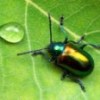Explaining the evolutionary tree of life is always a tricky proposition, as narratives are inherently linear but evolution spirals outwards in countless messy directions at once. To tell a story from the tangled bank requires picking a single thread and following it, yet it is precisely our tendency to follow single threads that causes so much misunderstanding of how evolution works.
Attenborough grapples with the problem using an animation that permeates the video, showing graphically the complexity of an ever dividing tree in the background as he traverses time from ancient to modern. Yet I don't think he is entirely successful. The problem is that the story he tells is the same one that's always told: the vertebrate descent from early chordates to primates. There is lip service paid to other lineages, but probably not enough. The more the same vertebrate story is repeated as the preferred exemplar of evolution, the more we reinforce the incorrect ladder-like narrative of linear evolutionary progression.
The same sort of video could be made that ends at sea cucumbers, or rotifers, or grasses, and it would be every bit as accurate as the same old primate one that we see again and again.
(h/t Pharyngula)
